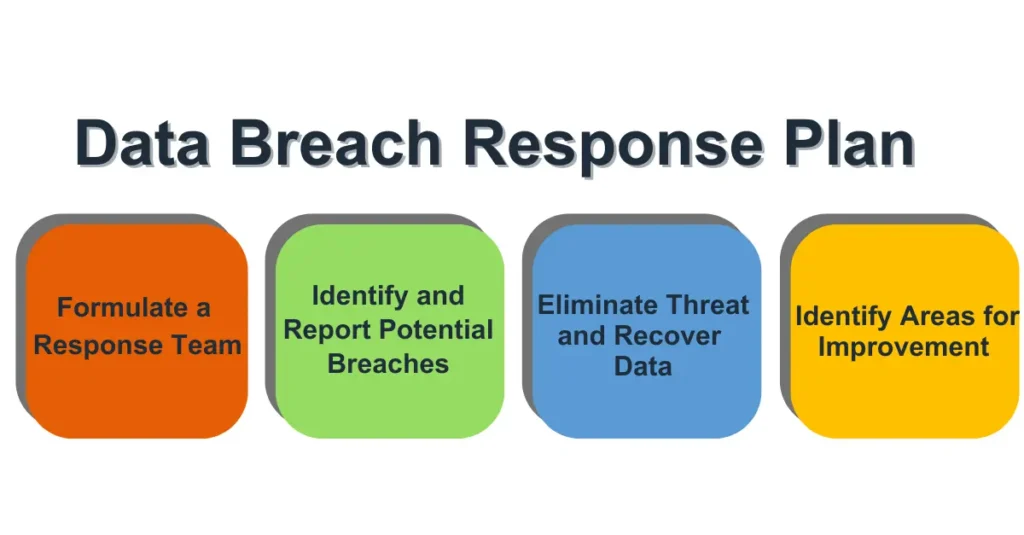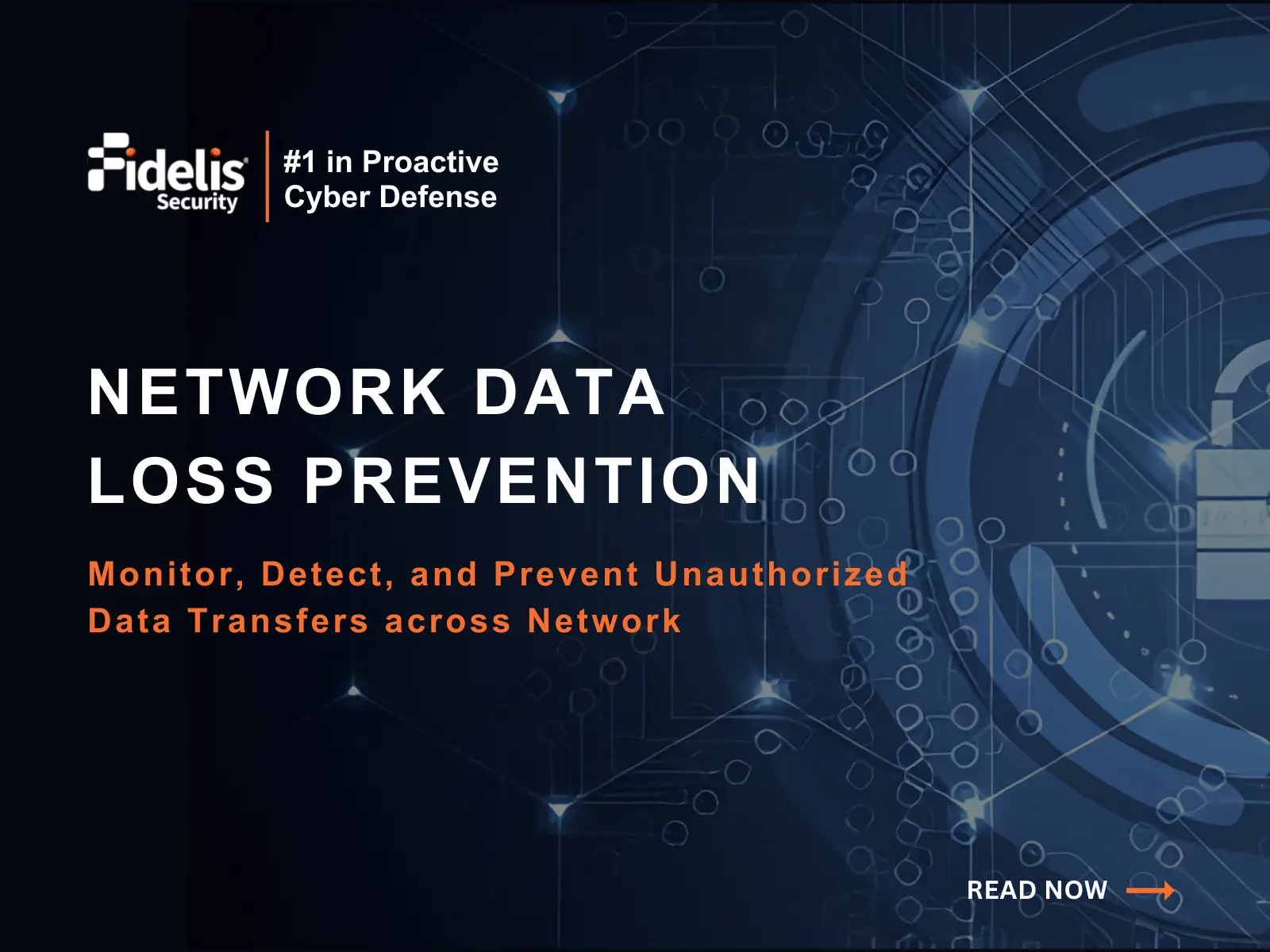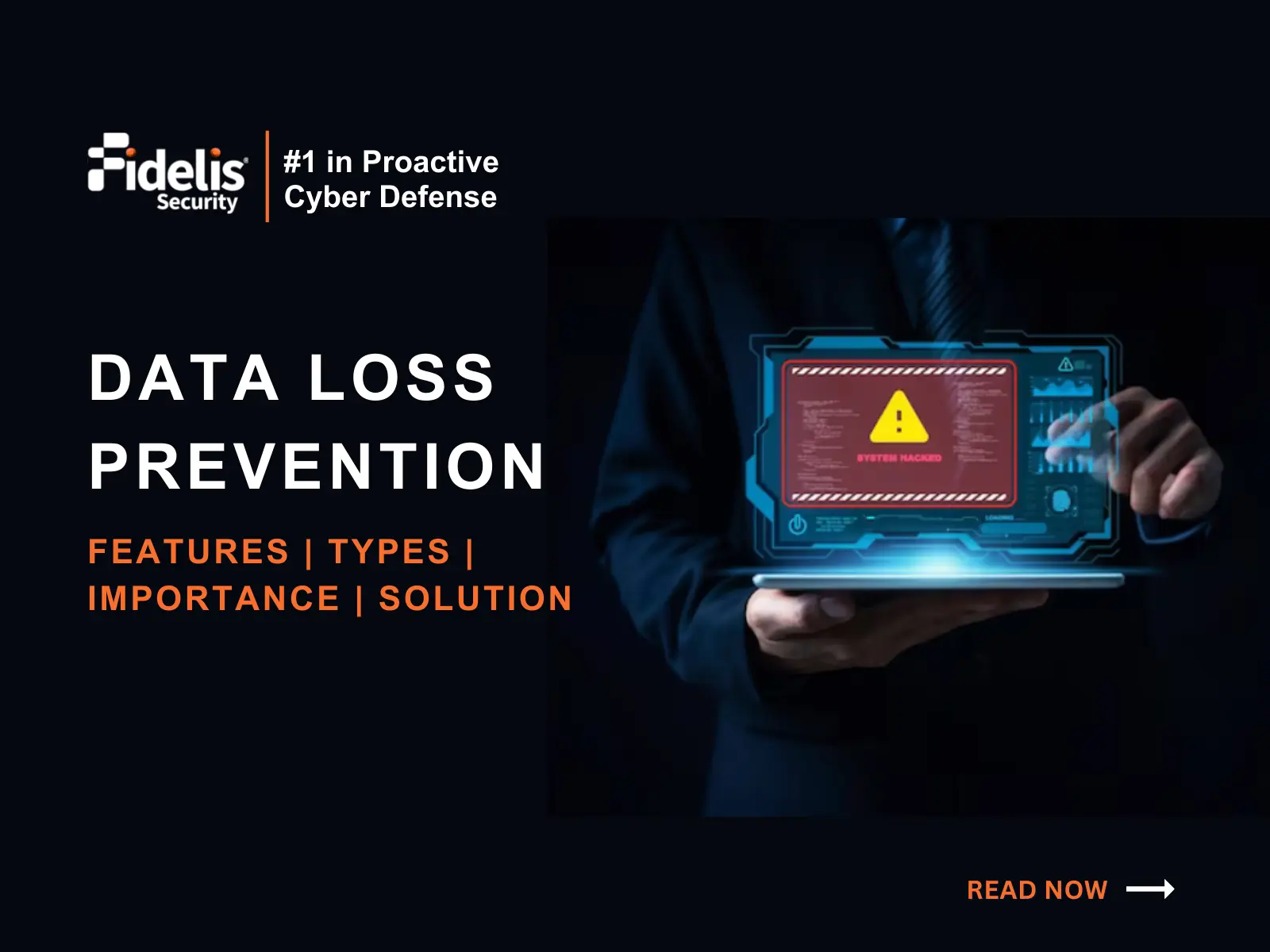Data breaches are no longer a matter of “if” but “when.” Even the most advanced security solutions are vulnerable in the rapidly changing threat landscape. The consequences for a data breach can be serious and lead to financial loss, reputational damage and even legal action against the organization. However, you can reduce these risks by developing a well-defined data breach response plan.
This guide empowers you to create a foolproof data breach response plan, safeguarding your business from the ever-present threat of cyberattacks.
Why a Data Breach Response Plan is Your Security Shield
Having a strong data breach response strategy in place is no longer optional; it is required to protect your organization’s sensitive data and reputation. Here’s why:
Rising Costs: The financial cost of data breaches continues to rise. The Cost of a Data Breach Report 2023 shows that the global average cost of a data breach has risen to $4.45 million, a 2.3% increase from USD 4.35 million in 2022. This emphasizes the important necessity for enterprises to proactively mitigate these costly incidents.
Beyond the Bottom Line: A data breach can have effects beyond financial loss. A corrupt system can erode customer trust, harm your brand, and result in significant regulatory fines. A well-defined data breach response plan ensures a timely, coordinated reaction that minimizes damage while demonstrating your commitment to data security, so helping to recover stakeholder trust.
What is a Data Breach Response Plan?
A data breach response plan (DRP) serves as your organization’s emergency playbook for cybersecurity incidents. It’s a comprehensive roadmap outlining the actions everyone will take if there is a data breach. A well-crafted DRP serves several critical purposes:
- Clear Roles and Responsibilities: A data breach can be a stressful situation. Your DRP outlines who does what, so everyone on your team understands their individual role and responsibilities. This minimizes confusion and promotes a coordinated response, minimizing wasted time and increasing efficacy.
- Established Communication Protocols: Effective communication is vital during a data breach. Your DRP sets clear communication protocols for all internal and external stakeholders. This guarantees that everyone receives timely and accurate information, allowing them to make informed decisions and reducing potential panic.
- Swift and Effective Response: The sooner you detect and contain a data breach, the less severe its effects will be. Your DRP specifies the procedures required for immediate containment, such as isolating compromised systems or resetting passwords. This prompt action helps to limit the amount of data exposed and the possible damage caused by the breach.
- Damage Mitigation and Recovery: Your DRP does not stop at containment. It also outlines the processes for recovery, such as removing the threat, restoring affected data from backups, and putting in extra security measures to avoid future breaches. With a defined recovery plan in place, you can reduce downtime and bring your systems back online as quickly as possible.
In essence, a data breach response plan serves as your organization’s first line of defense against a cyberattack. It enables your team to respond quickly, efficiently, and collectively, reducing damage and ensuring a smooth recovery.
Key Components to Building Your Data Breach Incident Response Plan
Developing a data breach response plan is a multi-stage process:

- Preparation Stage: Form a dedicated data breach response team with clear roles and responsibilities for each member. This team should comprise IT security experts, legal counsel, public relations professionals, and senior management. Next, conduct a thorough inventory of your critical systems and data. Prioritize protection efforts by categorizing this data according to its sensitivity level. Create explicit communication protocols for both internal and external parties during a breach. Finally, design a data breach response plan template that documents these procedures.
- Detection and Analysis Stage: Train your team to identify and report potential breaches quickly. This could include installing security information and event management (SIEM) solutions for continuous monitoring. Immediate containment actions are required after detecting a potential breach. Isolate compromised systems and limit access to important information. Conduct a forensic investigation to discover the underlying cause of the breach and the degree of the damage.
- Remediation and Recovery: Take decisive steps to eliminate the threat and recover any affected data. This may include fixing vulnerabilities, changing passwords, and restoring backups. Create a customer notification and public relations strategy that clearly communicates the incident and the efforts you’re making to rectify it. Finally, adopt further security measures to prevent future breaches.
- Post-Incident Review Stage: Assess the success of your response plan. Identify areas for improvement and adjust your plan accordingly. Conduct regular training and testing exercises to ensure that your team is ready to deal with a real-world breach.
Having a solid foundation for your data breach response plan is a great first step. Now, let’s explore the next step to create an impregnable response. These best practices will further enhance your plan and equip your team to effectively combat even the most sophisticated cyberattacks.
Best Practices for an Impregnable Response
Beyond the basics – here are some advanced ways to take your response to an impregnable level:
- Early detection: Advanced security tools, such as SIEM, can identify attacks faster. Automate responses to ensure immediate containment.
- Targeted Communication: Maintain transparency. Establish explicit protocols for both internal and external stakeholders. Practice communicating concisely during a crisis.
- Tailored Response: Analyze each breach to determine the data compromised, the attacker's motivations, and the affected systems. Adjust your reaction accordingly.
- Automation: To free up your team's time for more complicated challenges, automate tasks like user lockouts and data encryption.
- Continuous Improvement: Test your plan regularly and adjust it to reflect lessons learned and industry best practices.
- Empower Employees: Train them to recognize threats and report suspicious behavior/activities.
- Proactive Hunting: Do not wait for attackers. Look for vulnerabilities before they are exploited.
Data Breach Response Plan Templates and Resources
Crafting a watertight data breach response strategy might be difficult, but you don’t have to do it alone. Numerous industry resources and templates are available to help you with this essential procedure. These websites can offer vital advice on best practices, industry rules, and the precise steps you should follow to develop an effective response plan.
Here are some key resources and templates to get you started:
- National Institute of Standards and Technology (NIST) Cybersecurity Framework: The NIST framework provides a voluntary, risk-based approach to addressing cybersecurity risk. It contains a core set of functions that can be customized to meet your organization’s specific requirements, including incident response functions.
- Federal Trade Commission (FTC) Data Security Guidance: The FTC imposes data security rules on numerous US organizations. Their Data Security Guidance gives a thorough review of these criteria and recommended practices for creating a data breach response strategy that conforms with US regulations.
- Health Insurance Portability and Accountability Act (HIPAA) Security Rule: HIPAA is a federal law designed to secure sensitive patient data in the healthcare industry. The HIPAA Security Rule establishes precise criteria for preserving electronic protected health information (ePHI) and responding to security breaches. Note: This resource is only applicable if your organization is a healthcare provider.
By leveraging these resources and templates, you can gain valuable insights and streamline the process of crafting a solid data breach response plan.
Network DLP: Your Solid Weapon Against Data Breaches
Data Loss Prevention (DLP) tools serve as a safeguard for your data breach response approach. Network DLP solution monitors data transmissions across your network, detecting and preventing efforts to steal sensitive data in real-time. This translates to numerous important benefits:
- Faster breach detection
- Reduced breach impact
- Provide a proactive layer of defense
- Improve investigative efficiency
- Enhanced regulatory compliance
- Reduced insider threat risk
Fidelis Network DLP provides improved data security. It collects extensive data attributes for unmatched insight, enables investigations into data migration, and protects sensitive information. It also serves as a compliance advocate and a multifaceted threat protector against insider threats, cloud misconfigurations, and phishing attacks. Fidelis Security’s DLP is an effective ally in the fight against data breaches.
Frequently Asked Questions
What is the difference between a data breach response plan and a data breach policy?
A data breach response plan is a road map that details the steps your firm will take in the case of a data breach. It outlines the roles, responsibilities, and communication methods for a coordinated response. A data breach policy, on the other hand, is an expanded set of guidelines that govern how your firm manages sensitive data and protects it against illegal access or exposure.
How can I get started with creating a data breach response plan?
Numerous resources are available online and through industry associations to help you create a data breach response plan. These resources include templates and best practices that can be tailored to your organization’s specific requirements
How can Network DLP help my business comply with regulations?
Many US data privacy regulations, such as HIPAA and GDPR, require firms to protect sensitive data. Network DLP helps to demonstrate compliance by keeping an auditable record of data activities.
Continuous Vigilance is Key
Fighting cyber threats is a constant battle. Implementing a well-defined data breach response strategy and adding a strong Network DLP solution will dramatically improve your organization’s preparedness and response capabilities.
Remember that constant improvement is vital. To keep ahead of the curve, review your plan regularly, adapt to emerging threats, and use industry best practices. This commitment to data security will build trust with your customers and stakeholders while limiting the impact of any breaches.




